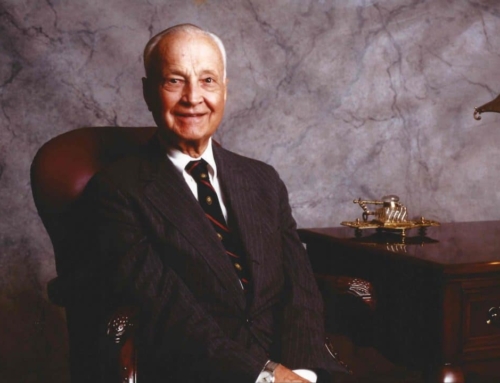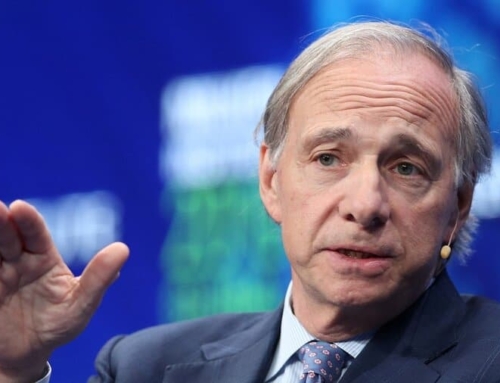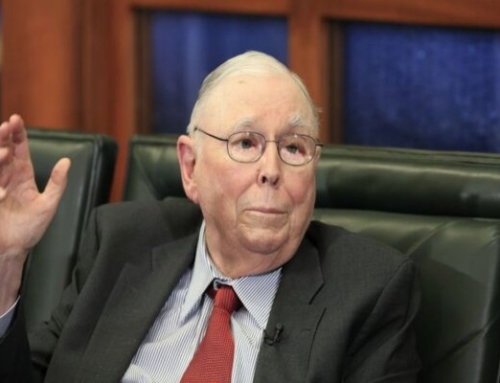Benjamin Graham – The Father of Value Investing !!
“The individual investor should act consistently as an investor and not as a speculator.” Benjamin Graham
Background
Benjamin Graham, who is famously known as the Father of Value Investing, was born in London in 1894 to Jewish parents. His original name was Benjamin Grossbaum, which he later changed during his later years to avoid anti-Semitic and anti-German sentiments, when the family moved to the New York City. His father owned and managed a well established furniture store, but after his death the family was left in poverty. Benjamin completed his graduation at the age of 20 and was offered a job to teach English, Maths and Philosophy, which he refused to accept and then started his Wall Steer career. He started his career with Graham-Newman partnership in 1923 and gained name and fame with The Northern Pipeline Co., which was the first wave as an investor in a situation which later became popular as the “Northern Pipeline Affairs”
Investing Career
Benjamin Graham’s books “The Intelligent Investor” and “Security Analysis”, proved to be the best investment books ever in world investment history. The 1930s and the 40s were the golden years for Benjamin Graham and his investment partnership the Graham-Newman. Graham-Newman suffered severe losses during the 1929 crash, but by the mid 1930 they had recovered. Despite this setback, Graham-Newman was able to generate a 17% annualized return through its liquidation in 1956. Graham-Newman made money by pursuing two separate strategies – (a) Buying securities trading at discounts to their intrinsic value (b) Engaging in arbitrage situations (such as merger arbitrage, convertible arbitrage, and other special situations). Graham-Newman focused on low-risk opportunities that did not require “predicting the unpredictable.”
Graham was gaining popularity in the investing world as an investor through his investment techniques and also as a mentor to most of the new investors, whom he taught at the alma mater, Columbia University. While working with David Dodd, he published the famous book, “Security Analysis” in 1934. This book became the bible for most of the value investors. He even inspired Warren Buffett who became his student and a big name in the world of value investing. Graham wrote the “The Intelligent Investor” book in 1949, which is the most sought after book for value investors.
Benjamin Graham wrote in his books that an investor should not get disturbed or be too concerned about the erratic market fluctuations in the stock prices. He mentioned that in the short term the stock market behaves like the voting machine, where prices are based on public perception and popularity, but in the long term it behaves like the weighing machine, reflecting its true value ie. the true underlying value of the business. Over the long run, and in the aggregate, a portfolio of stocks trading below intrinsic value will produce outsized returns in relation to general market returns.
Graham’s largest gain was from GEICO, which his Graham-Newman Partnership purchased 50% in 1948 for $712,000. The position grew to $400 million by 1972, contributing more to the portfolio than all of Graham-Newman’s other investments combined. GEICO was eventually acquired in whole by Berkshire Hathaway in 1996, having previously been saved by Buffett and John J. Byrne in 1976.
In the 1973, Graham outlined a new criteria for contrarian value investing:
- P/E ratio under 10
- Shares selling at half of market high
- Lowest price to book
Graham believed that a widely diversified portfolio of 30 stocks would produce above-average returns. Now let us see how new investors can learn from his principles and rules of value investing.
Graham had few rules for defensive investors, which includes:
- Diversifying optimally
- Selecting large and conservative companies
- Companies with consistent dividend payment history
- Limiting the price at which you buy, don’t buy at any price
Lessons from Benjamin Graham
Know the Investor Type
Graham mentioned in his books that for an investor the investment is most intelligent when it is most like business, as businesses often run well or succeed or are correct, when it is backed with proper facts and analysis, and does not depend on what others think of it. So an investor is never right or wrong because others thought him to be right or wrong, but he is right just because he backs his decision with right facts and analysis. He in his books has clearly distinguished between the active and passive investors.
He mentioned that an active investor or an “enterprising investor” is one who has more specialized knowledge and has time and interest to find out the best and exceptional buys.
On the other hand he described the passive investors as “defensive investors”, who invests cautiously, and buys for long term and invests in value stocks.
Margin of Safety
Graham recommended that investors should spend time and effort to analyze the financial conditions of the companies. When a company is available on the market at a price which is at a discount to its intrinsic value, a “margin of safety” exists, which makes it suitable for investment. According to Benjamin Graham, the margin of safety is the spread between a stock’s trading price and the intrinsic value of the stock.
This margin of safety provides you with a margin of error in case an investment fails to perform. Benjamin Graham saw margin of safety as an important factor in selecting an investment, but he also knew it was not the “end all be all” of a buying opportunity.
Diversification
According to Graham, an investor should diversify his portfolio to minimise the risk of his investment. According to Graham, diversification is similar to insurance underwriting, where the insurer’s price risk is based on statistical information, determining at what price they can assume risks while in the aggregate generating a positive return on that. Margin of safety and diversification go hand-in-hand when it comes to Graham-style value investing. Margin of safety ensures a margin of error in case of unforeseen risks. Diversification provides a large enough sample size for the portfolio to perform close to its expected outcome.
For defensive investors, diversification is an unavoidable feature of the investment portfolio. This is because defensive investors are not active investors and hence a diverse portfolio can reduce the impact of unfavourable market movement on their returns. According to him, for risk management purposes you should carry at least 40 different stocks at each time.
Mr. Market”: Benjamin Graham on Market Volatility
Graham explained his philosophy on market volatility by using the character “Mr. Market”. Investing in stocks means dealing with volatility. Instead of running for the exits during times of market stress, the smart investor greets downturns as chances to find great investments. According to Graham, investing in stocks means dealing with volatility. Instead of running for the exits during times of market stress, the smart investor greets downturns as chances to find great investments.
Few valuable value investing principles (rules or checklist) of Benjamin Graham are:
- Portfolio diversification of between 10 to 30 stocks
- Large sales numbers of at least $1 billion
- Current ratio should be 2 or greater than 2
- Paid dividends for at least 20 years with no misses
- No single year of decreasing earnings over the past 10 years & earning growth of at least 3% annually during those 10 years
- Price earnings ratio should be 15 or lower
- Difference between assets and liabilities at least 1.5 times of market capitalization
- Total debt less than book value
- Total debt less than 2 times the Net Current Asset Value
- Stock prices below ⅔ of Net Current Asset Value
- Stock prices below ⅔ of tangible book value per share
- P/E ratio less than 40% of the highest P/E ratio, the stock had over the past 5 years
- Dividend yield of at least ⅔ the AAA bond value
Now let us understand how did Benjamin Graham picked up value stock or his criteria list:
- The company quality rating
- Debt to current asset ratio
- Current ratio
- Positive earning per share growth
- Price to earning per share (P/E) growth
- Price to book value
- Dividends
Graham’s principles are followed by most value investors till date. Warren Buffett and Charlie Munger were among the well renowned students of Graham, who excelled in value investing. The takeaways from Graham’s work are many but we do not need to follow his system blindly, as the markets of today have material differences to those seen in the 1920s-1940s. From Graham’s later theories, you can see his strategies also needed adaptation to stay relevant in the 1960s and 70s. Above all else, Graham preached a value-oriented investment, tailored to the conditions of the current market.
By following the simple value investment strategy, rooted in the fundamentals of Benjamin Graham style, we too can generate big returns over a long investing timeframe. To have long term success with your investments, having a well drafted financial plan is required, which is based on deep research and strategy and very well described by Graham:
“Successful investing professionals are disciplined and consistent and they think a great deal about what they do and how they do it.” Benjamin Graham
Benjamin Graham – The Father of Value Investing !!
“The individual investor should act consistently as an investor and not as a speculator.” Benjamin Graham
Background
Benjamin Graham, who is famously known as the Father of Value Investing, was born in London in 1894 to Jewish parents. His original name was Benjamin Grossbaum, which he later changed during his later years to avoid anti-Semitic and anti-German sentiments, when the family moved to the New York City. His father owned and managed a well established furniture store, but after his death the family was left in poverty. Benjamin completed his graduation at the age of 20 and was offered a job to teach English, Maths and Philosophy, which he refused to accept and then started his Wall Steer career. He started his career with Graham-Newman partnership in 1923 and gained name and fame with The Northern Pipeline Co., which was the first wave as an investor in a situation which later became popular as the “Northern Pipeline Affairs”
Investing Career
Benjamin Graham’s books “The Intelligent Investor” and “Security Analysis”, proved to be the best investment books ever in world investment history. The 1930s and the 40s were the golden years for Benjamin Graham and his investment partnership the Graham-Newman. Graham-Newman suffered severe losses during the 1929 crash, but by the mid 1930 they had recovered. Despite this setback, Graham-Newman was able to generate a 17% annualized return through its liquidation in 1956. Graham-Newman made money by pursuing two separate strategies – (a) Buying securities trading at discounts to their intrinsic value (b) Engaging in arbitrage situations (such as merger arbitrage, convertible arbitrage, and other special situations). Graham-Newman focused on low-risk opportunities that did not require “predicting the unpredictable.”
Graham was gaining popularity in the investing world as an investor through his investment techniques and also as a mentor to most of the new investors, whom he taught at the alma mater, Columbia University. While working with David Dodd, he published the famous book, “Security Analysis” in 1934. This book became the bible for most of the value investors. He even inspired Warren Buffett who became his student and a big name in the world of value investing. Graham wrote the “The Intelligent Investor” book in 1949, which is the most sought after book for value investors.
Benjamin Graham wrote in his books that an investor should not get disturbed or be too concerned about the erratic market fluctuations in the stock prices. He mentioned that in the short term the stock market behaves like the voting machine, where prices are based on public perception and popularity, but in the long term it behaves like the weighing machine, reflecting its true value ie. the true underlying value of the business. Over the long run, and in the aggregate, a portfolio of stocks trading below intrinsic value will produce outsized returns in relation to general market returns.
Graham’s largest gain was from GEICO, which his Graham-Newman Partnership purchased 50% in 1948 for $712,000. The position grew to $400 million by 1972, contributing more to the portfolio than all of Graham-Newman’s other investments combined. GEICO was eventually acquired in whole by Berkshire Hathaway in 1996, having previously been saved by Buffett and John J. Byrne in 1976.
In the 1973, Graham outlined a new criteria for contrarian value investing:
- P/E ratio under 10
- Shares selling at half of market high
- Lowest price to book
Graham believed that a widely diversified portfolio of 30 stocks would produce above-average returns. Now let us see how new investors can learn from his principles and rules of value investing.
Graham had few rules for defensive investors, which includes:
- Diversifying optimally
- Selecting large and conservative companies
- Companies with consistent dividend payment history
- Limiting the price at which you buy, don’t buy at any price
Lessons from Benjamin Graham
Know the Investor Type
Graham mentioned in his books that for an investor the investment is most intelligent when it is most like business, as businesses often run well or succeed or are correct, when it is backed with proper facts and analysis, and does not depend on what others think of it. So an investor is never right or wrong because others thought him to be right or wrong, but he is right just because he backs his decision with right facts and analysis. He in his books has clearly distinguished between the active and passive investors.
He mentioned that an active investor or an “enterprising investor” is one who has more specialized knowledge and has time and interest to find out the best and exceptional buys.
On the other hand he described the passive investors as “defensive investors”, who invests cautiously, and buys for long term and invests in value stocks.
Margin of Safety
Graham recommended that investors should spend time and effort to analyze the financial conditions of the companies. When a company is available on the market at a price which is at a discount to its intrinsic value, a “margin of safety” exists, which makes it suitable for investment. According to Benjamin Graham, the margin of safety is the spread between a stock’s trading price and the intrinsic value of the stock.
This margin of safety provides you with a margin of error in case an investment fails to perform. Benjamin Graham saw margin of safety as an important factor in selecting an investment, but he also knew it was not the “end all be all” of a buying opportunity.
Diversification
According to Graham, an investor should diversify his portfolio to minimise the risk of his investment. According to Graham, diversification is similar to insurance underwriting, where the insurer’s price risk is based on statistical information, determining at what price they can assume risks while in the aggregate generating a positive return on that. Margin of safety and diversification go hand-in-hand when it comes to Graham-style value investing. Margin of safety ensures a margin of error in case of unforeseen risks. Diversification provides a large enough sample size for the portfolio to perform close to its expected outcome.
For defensive investors, diversification is an unavoidable feature of the investment portfolio. This is because defensive investors are not active investors and hence a diverse portfolio can reduce the impact of unfavourable market movement on their returns. According to him, for risk management purposes you should carry at least 40 different stocks at each time.
Mr. Market”: Benjamin Graham on Market Volatility
Graham explained his philosophy on market volatility by using the character “Mr. Market”. Investing in stocks means dealing with volatility. Instead of running for the exits during times of market stress, the smart investor greets downturns as chances to find great investments. According to Graham, investing in stocks means dealing with volatility. Instead of running for the exits during times of market stress, the smart investor greets downturns as chances to find great investments.
Few valuable value investing principles (rules or checklist) of Benjamin Graham are:
- Portfolio diversification of between 10 to 30 stocks
- Large sales numbers of at least $1 billion
- Current ratio should be 2 or greater than 2
- Paid dividends for at least 20 years with no misses
- No single year of decreasing earnings over the past 10 years & earning growth of at least 3% annually during those 10 years
- Price earnings ratio should be 15 or lower
- Difference between assets and liabilities at least 1.5 times of market capitalization
- Total debt less than book value
- Total debt less than 2 times the Net Current Asset Value
- Stock prices below ⅔ of Net Current Asset Value
- Stock prices below ⅔ of tangible book value per share
- P/E ratio less than 40% of the highest P/E ratio, the stock had over the past 5 years
- Dividend yield of at least ⅔ the AAA bond value
Now let us understand how did Benjamin Graham picked up value stock or his criteria list:
- The company quality rating
- Debt to current asset ratio
- Current ratio
- Positive earning per share growth
- Price to earning per share (P/E) growth
- Price to book value
- Dividends
Graham’s principles are followed by most value investors till date. Warren Buffett and Charlie Munger were among the well renowned students of Graham, who excelled in value investing. The takeaways from Graham’s work are many but we do not need to follow his system blindly, as the markets of today have material differences to those seen in the 1920s-1940s. From Graham’s later theories, you can see his strategies also needed adaptation to stay relevant in the 1960s and 70s. Above all else, Graham preached a value-oriented investment, tailored to the conditions of the current market.
By following the simple value investment strategy, rooted in the fundamentals of Benjamin Graham style, we too can generate big returns over a long investing timeframe. To have long term success with your investments, having a well drafted financial plan is required, which is based on deep research and strategy and very well described by Graham:
“Successful investing professionals are disciplined and consistent and they think a great deal about what they do and how they do it.” Benjamin Graham







Leave A Comment